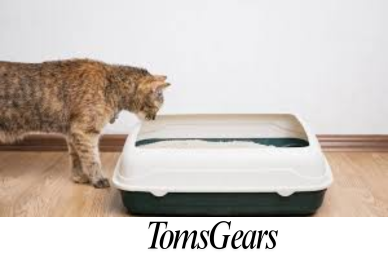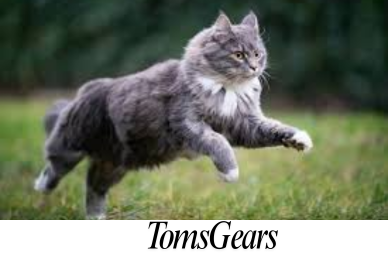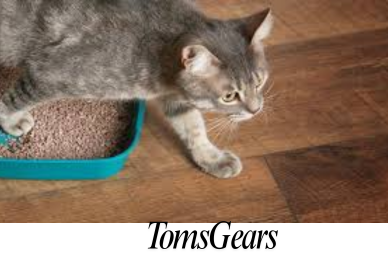Why Does My Cat Get Black Boogers? An In-Depth Look
It’s a common sight for cat owners – those unsightly black specks around your feline friend’s nose. While it might seem concerning at first, occasional black boogers are actually quite normal and not necessarily a cause for alarm. However, it’s essential to differentiate between typical dried mucus and discharge that could indicate an underlying health issue requiring veterinary attention.
This article will explain the nature of black boogers in cats, their potential causes, and when you should seek professional help.
Understanding the Nature of Cat Boogers
Those pesky black boogers you find around your cat’s nose are simply dried mucus, much like the ones humans experience. Mucus plays a crucial role in trapping dust, allergens, and irritants that enter the nasal passages, helping to protect your cat’s respiratory system. The black color is a result of the presence of melanin, a pigment found in cat tears.
Image: A Diagram of Cat Respiratory System
To better understand the role of boogers, it’s helpful to have a basic understanding of your cat’s respiratory anatomy. The nasal passages and tear ducts are all interconnected, facilitating the removal of debris and irritants through mucus production and drainage.
Common Causes of Increased Black Boogers in Cats
While occasional black boogers are perfectly normal, an increase in frequency or severity could indicate an underlying issue.
Here are some common causes of increased black boogers in cats:
1. Environmental Irritants: Dry air, exposure to dust, pollen, smoke, or harsh cleaning chemicals can all contribute to increased mucus production as your cat’s body tries to expel these irritants.
Tip: Consider using an air purifier, such as the Catit Magic Air Purifier, to help reduce airborne irritants in your home.
2. Upper Respiratory Infections (URI): Viral infections like feline herpesvirus and calicivirus, or bacterial infections like Bordetella and Chlamydophila, can lead to increased mucus production, sneezing, and lethargy. If your cat’s black boogers are accompanied by these symptoms, it’s important to consult your veterinarian.
3. Allergies: Just like humans, cats can develop allergies to environmental allergens like pollen or dust mites. Allergic reactions can cause increased mucus production, itchy eyes, and paw-swiping at the nose. If you suspect your cat has allergies, consult your vet for proper diagnosis and treatment.
4. Dental Problems: While not directly related, dental issues like tooth root abscesses can cause inflammation and irritation, indirectly leading to increased nasal discharge. Regular dental checkups and proper dental hygiene are crucial for your cat’s overall health.
How to Find if Your Cat Boogers Are Normal Or Concerning?
Not all black boogers are created equal. It’s important to monitor the frequency, severity, and color of the discharge, as well as any accompanying symptoms, to determine if a visit to the vet is necessary.
Here’s a quick guide:
Normal Black Boogers:
- Occasional
- Black or brown in color
- Easily removed with a warm, damp cloth
Concerning Black Boogers:
- Frequent or excessive
- Colored discharge (yellow, green, red)
- Accompanied by other symptoms (sneezing, lethargy, difficulty breathing, loss of appetite)
If you notice any concerning signs, it’s best to consult your veterinarian promptly.
How to Properly Address Black Boogers
When it comes to removing those pesky black boogers, it’s important to be gentle. Use a warm, damp cloth to gently wipe away the dried mucus, being careful not to forcefully pick or irritate your cat’s delicate nasal area.
For particularly stubborn, dried-on boogers, you can try using a saline solution, such as the Natural Liquid Killer Eye Cleans Solution, to help soften the discharge before wiping it away.
Prevention and Environmental Control
While some black boogers are inevitable, there are steps you can take to help minimize excessive mucus production in your feline friend. Regularly cleaning your home and using an air purifier can help reduce airborne irritants like dust and dander. Additionally, maintaining a healthy humidity level in your living space can prevent excessively dry air from irritating your cat’s nasal passages.
Ensuring your cat is well-hydrated and receiving a balanced, high-quality diet can also contribute to overall respiratory health and potentially reduce excessive booger production.
When to See a Vet
While occasional black boogers are nothing to worry about, there are certain situations when it’s crucial to seek veterinary attention:
- Persistent or worsening black boogers
- Colored discharge (yellow, green, red)
- Difficulty breathing, excessive sneezing, or lethargy
- Any other concerning symptoms accompanying the black boogers
Your veterinarian can properly diagnose and treat any underlying issues contributing to the excessive nasal discharge.
Additional Information
It’s important to note that while rare, black discharge from a cat’s nose can also be a sign of more serious conditions, such as fungal infections, foreign objects lodged in the nasal cavity, or even nasal tumors. If your cat’s black boogers are accompanied by other concerning symptoms or fail to improve with home care, it’s essential to have your veterinarian examine your feline friend.
For reliable information on cat health and respiratory issues, trusted resources include the American Veterinary Medical Association (AVMA) and The Spruce Pets.
Final Words
Black boogers in cats are often a normal occurrence, but it’s essential to monitor their frequency, severity, and any accompanying symptoms. By understanding the potential causes, taking preventive measures, and seeking veterinary care when necessary, you can ensure your feline companion stays happy and healthy. Remember, occasional black boogers are nothing to worry about – it’s simply your cat’s way of keeping those nasal passages clear and clean.






